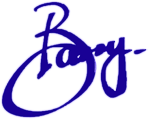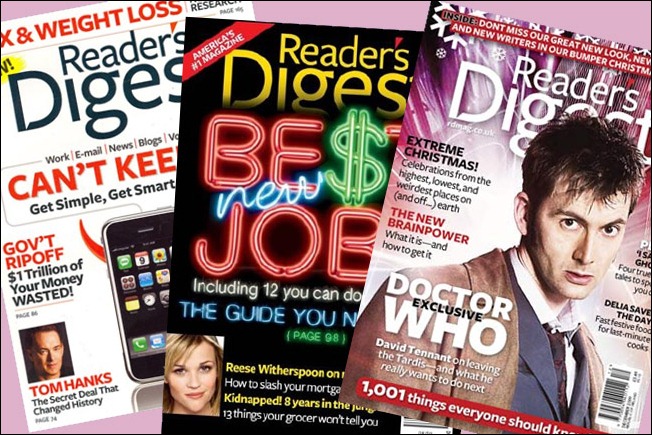Reader’s Digest: Going, Going, Going
I have just finished reading an interesting article on the Huffington Post site. I realise this is only one person’s view, or maybe a team of them at the Post, but the underlying reasoning is pretty sound.
The article is about 10 big name ‘brands’ that will (maybe, could) disappear by the end of 2011 (next year).
Some of the brands in this ten are only directly relevant to America, but the following brands from the list will be recognised by most Australians.
- Reader’s Digest.
- Blockbuster Video.
- BP.
- RadioShack.
- Merrill Lynch.
- Kia Motors.
I am not going to go into all of these. If you are interested then I suggest you check the article at the Huffington Post and then do your own follow-up research to decide if you agree with the Huffington Post's position. However some of the background I found on Reader’s Digest and Kia Motors is interesting.
Reader’s Digest
From what I could find on the Web it would appear that Reader’s Digest have been in financial difficulty for a few years. Last August they took advantage of the Chapter 11 bankruptcy act in America to try and buy time to reduce debt and restructure. They emerged from that with enough operating budget to continue in business.
The concern is, with worldwide trends plummeting for printed material, that if Reader’s Digest cannot make the jump from print to mobile devices (iPad, e-books, phone readers) and web media then it will fall over the edge and disappear.
From follow-up research it seems that about three quarters of baby boomers (boomers) still prefer printed material; which is good news for Reader's Digest. But the bad news is that 90 percent of Gen X, Gen Y, and Gen Z/iGen like their information abbreviated and not printed on paper. The problem here for Reader’s Digest is that the number of Gen X, Gen Y, and Gen Z people is almost three times the number of boomers and every day the number of boomers decreases—but the number of X, Y, and Z people remains (more or less) constant. And then, coming along after Gen Z, we have the eco-Gen and who knows what their preferences are going to be.
At this time the Reader’s Digest web site is comprised of what seems to be mainly advertising and teasers in an attempt to get people to sign up for the printed digest.
The Wikipedia entry about Reader’s Digest is kind of interesting. The digest was founded in 1922. The plan was to write a digest for families that contained condensed articles taken from other magazine and newspapers and put them into an easy-read easy-carry (which is why it is smaller) easy-reference format. Sounds almost like an iPad. I wonder if Reader’s Digest have an iPad app?
Kia Motors
For those that don’t know already Kia Motors is a division of Hyundai. Hyundai is a South Korean motor vehicle manufacturer. The Kia brand is Hyundai’s second tier or ‘lower-middle’ market offering, and the Hyundai brand is reserved for the third tier or ‘middle-middle’ market—or at least that is Hyundai’s marketing strategy.
The thinking here is that, like other vehicle manufacturers (GM and Ford), Hyundai will be forced to consolidate it multi-layered market offerings due to the massive design, testing, and production costs involved with modern vehicles (due to safety, economy, and ecological impact reasons).
Should this be the case then as part of this consolidation it is very unlikely that Hyundai will abandon its lucrative and highly profitable tier three Hyundai branding. The Huffington Post suggests that it is far more likely that the second-tier Kia brand will be dropped.


